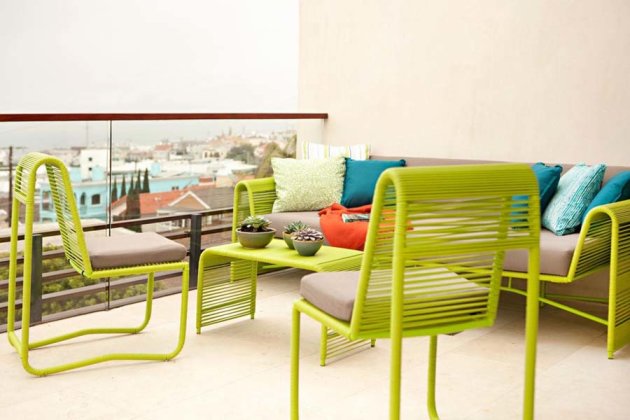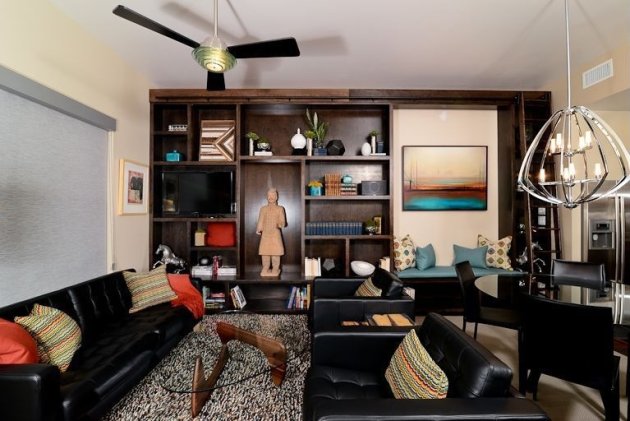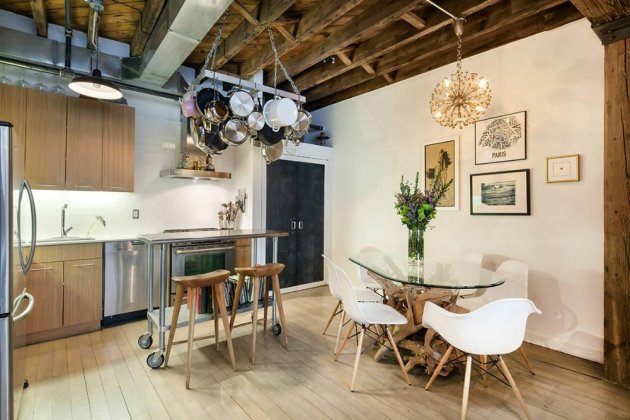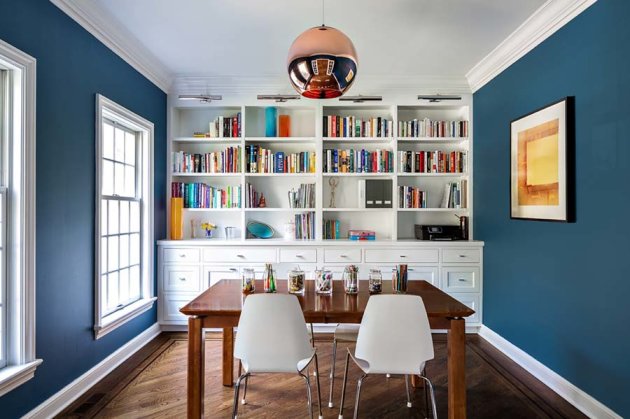
A master bathroom with a whirlpool tub, a rainfall shower head, heated floors and his and her sinks is great for some, but oftentimes, space and budget concerns bring most of us back down to earth.
Don’t let your small bathroom limit your dreams or creativity. There have been plenty of homeowners and designers who have done amazing transformations with spaces most Americans would consider a small bathroom.
We have rounded up our favorite small bathroom designs, as well as the strategy and subtle cues that make you forget how small your bathroom really is.
When dealing with a small bathroom, it’s usually a smart call to go with brighter or softer colors, as my coworker Alyson Yu pointed out in
6 Design Ideas To Make The Most of Your Small Bathroom. Nonetheless, these homeowners went with a dark brown to match the color of the bedroom. For the bathroom, they added leaf pulls to the mirror, an oil-rubbed bronze faucet, granite counters and small oil paintings.
Despite its darker color, we like the color choice thanks to the sense of continuity with the rest of the bedroom.
Most small bathrooms are used as guest bathrooms in the hallway. Well, just because it’s not your primary bathroom, that doesn’t mean you can’t design it with the best.
This vintage small bathroom utilized bead board paneling, a light taupe color and something all small bathrooms need; a pedestal sink.
Pedestal sinks were designed and made for small bathrooms. Unlike a bathroom vanity, it doesn’t take up valuable space at your feet or in one end of the bathroom. You may lose some cabinet space, but you gain valuable square footage, both in looks and feel.
Who said small bathrooms had to be boring and dull? These homeowners were certainly not afraid to go bold and bright with an entire wall mural dedicated to life under the sea.
Continuing the theme, they added green countertops, green and blue hand towels and other sea-themed furniture items throughout.
Given its size, we love the addition of the dark wood cabinets on the counter. You certainly sacrifice counter space, but oftentimes, homeowners need those cabinets for extra towels, toiletries and other bathroom supplies.
If you are short on space and want to make a splash in your small bathroom, you better upgrade the color and vanity. These homeowners show that bold colors and ceramic tile can go long way in adding that “wow” factor to any small bathroom.
In this custom bathroom remodel, they incorporated ceramic, gold tile along the wall, marble counters, gold and red accents throughout and an Asian theme. They certainly spent their fair share on this bathroom remodel, but according to our
bathroom renovations cost estimator, the average cost to remodel a bathroom is $7,920.
Arched ceilings are a great way to add the idea of extra square footage to any small bathroom. These homeowners also incorporated a recessed shower shelf, which is a must-have for all small bathrooms. It doesn’t only make your key toiletries accessible, but it also doesn’t get in your way.
Other additions that you wouldn’t normally see in the casual small bathroom include granite counters, pink flowers, a casement window and a purple shower curtain. It’s small bathroom style at its finest.
Small bathrooms do not get much more modern than this with the white tile floors and walls, a wood rug, black accents, a dark wood vanity with plenty of storage, recessed lighting and a vessel sink.
At first glance, the bathroom may seem large, but the sleek features, black and white hues, as well as the perfectly placed vanity make it look and feel larger than it really is.
They were also able to add a tub and shower combo.
Just because you have a small bathroom doesn’t mean you can’t spend a whole night in your bathtub reading a good book. This Victorian masterpiece utilized a brushed nickel faucet, translucent glass in the window, a bathtub tray to hold the necessities and white tile all around.
With a bathroom like this, you forget all the worries that come from a long day at the office.
This may be one of the best small bathroom designs we have ever seen. Let’s first start off with the huge mirror above the vanity. Did you know that mirrors work with the light to create a wider look for any bathroom? Therefore, you should always go as big as possible when it comes to mirrors in a small bathroom.
Now, let’s move to this open vanity. They have three large shelves/holders for larger bathroom items like towels and four small placeholders for other necessary items like soap or shampoo. You may have to keep it clean, but when you do, your small bathroom can look as radiant and cheerful as this gem.
Small bathrooms should never limit you as a homeowner. Despite limited square footage, you can create a luxurious bathroom that other small bathroom owners only dream about. Make those dreams a reality.
Contact your local RE/MAX Realty Center Agent Stacey Guzanick 262.490.3696, Guzanick@gmail.com, if you have questions about buying a house or selling one. I can guide you toward your next home.
See you at the closing!





































 Granite requires care. Granite is fairly heat-resistant and easy to clean, but you should keep in mind that it's also porous. It can crack, chip, stain and show scratches.
Granite requires care. Granite is fairly heat-resistant and easy to clean, but you should keep in mind that it's also porous. It can crack, chip, stain and show scratches.